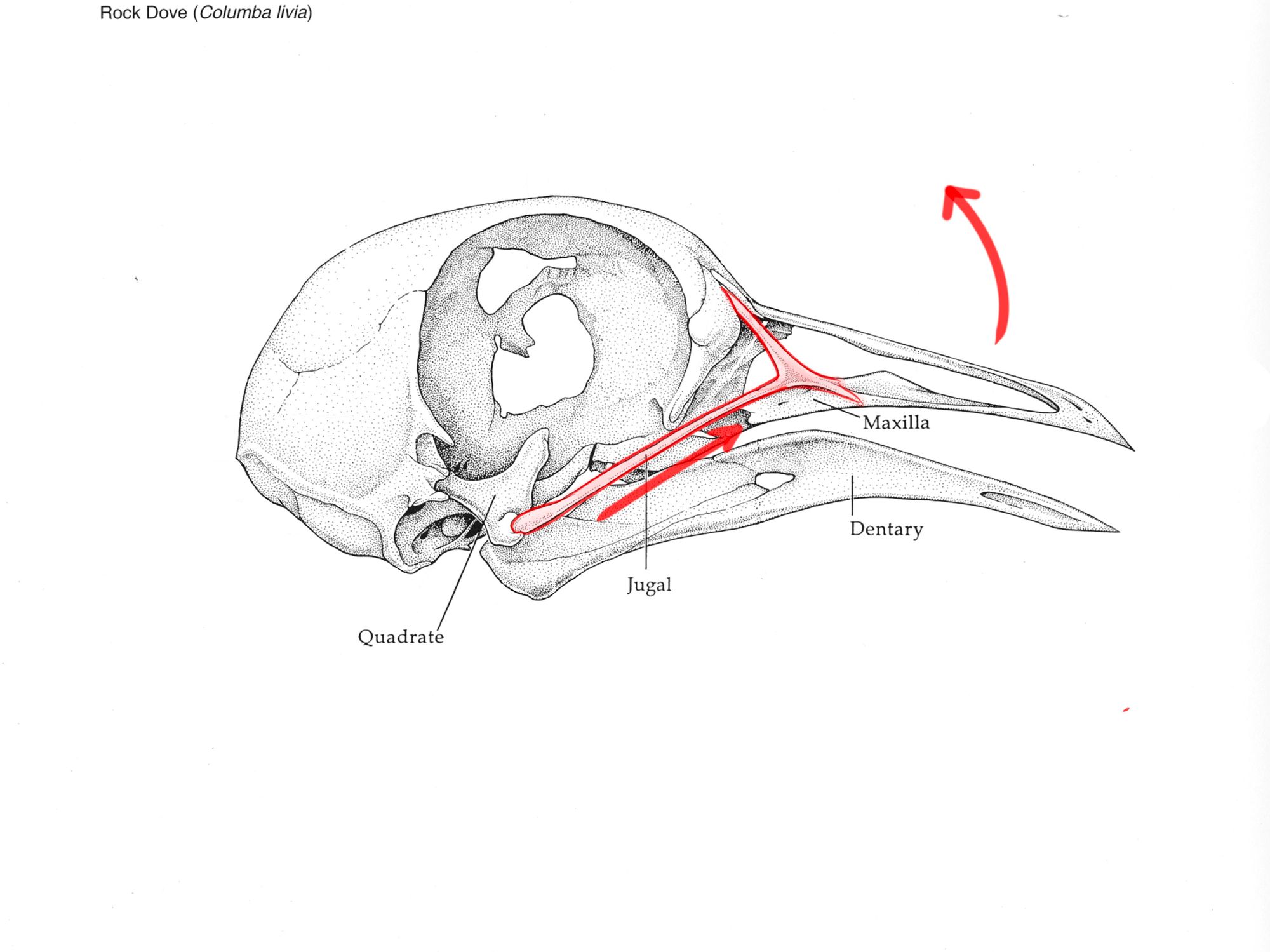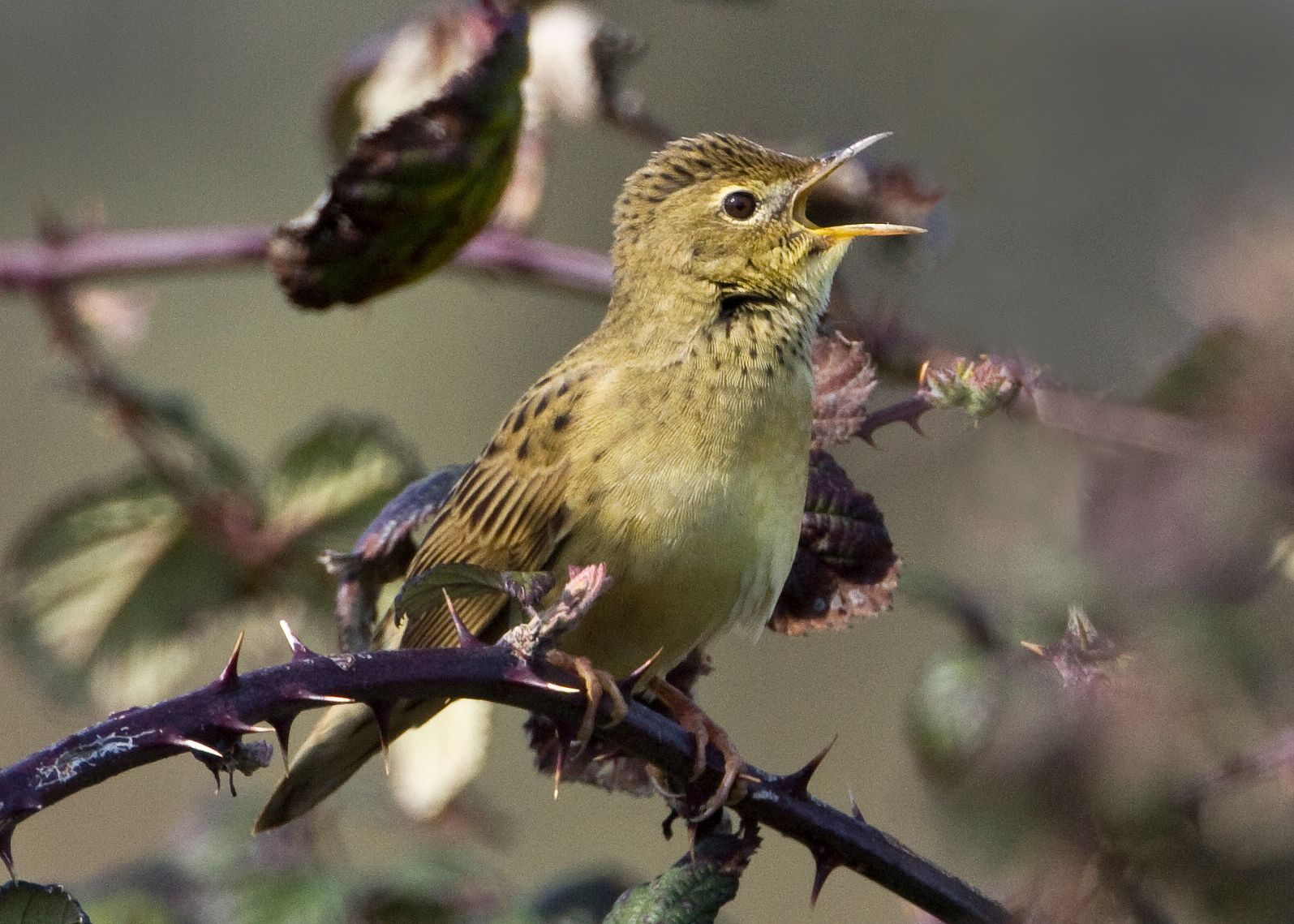Jawing With Birds

All week I have been preparing an educational talk about bird bones and skeletons, and I'm so excited to find ways to share this information with people.
I love talking about bird bones and skeletons because it's surprising how much we can learn about the features and movements of birds by studying the underlying structure of their bones.
As an example, I want to share with you what I've learned about how bird jaws work. This might seem like a boring topic, but it's actually a study in elegance and it demonstrates the underlying design principle that shapes every aspect of birds.
Flight is an extraordinarily challenging and demanding activity that requires radical compromises and extreme weight reduction. Birds have risen to this challenge by finding unique solutions that eliminate heavy bones and muscles, and their jaw mechanism is one perfect example.
Here is a bird skull with the key bones labeled. Follow along and I'll explain how this works.

Because the upper bill of birds is part of their skulls I've always assumed that when birds open their mouths they simply lower their lower jaws. Exactly what this gull seems to be doing!

But here is what is actually happening under the surface...
When a bird lowers its lower jaw, the bottom beak (the dentary) is pulled down with muscles. This drops the tip of the dentary, which at the same time lifts the rear of the dentary.

This action pushes on a critical bone called the quadrate, which pivots at its base (marked with a red circle here). Pushed by the dentary, the quadrate bone rotates upward.

This action thrusts the base of the quadrate forward, where it pushes on a long, skinny bone called the jugal, and the jugal connects to the upper beak (the maxilla).

Although the upper beak (the maxilla) is part of the skull, the base of this bone is surprisingly thin and flexible where it meets the skull so this means that the forward motion of the jugal pushes the upper beak upward.

The result of this jaw mechanism is that one muscle pulling down on the lower jaw of a bird triggers a series of mechanical movements that opens the upper bill at the same time--with no additional, heavy muscles!

This is just one example of the many ways that birds have uniquely modified their bones and skeletons to reduce weight, and it's one of the reasons why I love to talk about birds.
[Note that I've modified these diagrams from the excellent textbook "Manual of Ornithology." This book is a technical but fantastic resource, especially for its high quality illustrations, and I highly recommend it for anyone who wants to learn more about birds. Apparently you can even download the book as a PDF if you're interested, (PDF) Manual of Ornithology: Avian Structure and Function by Noble S. Proctor, Patrick J. Lynch | Viani Vian - Academia.edu. The two photos are from the internet and used here to highlight some of the key points made in this post.]





Member discussion